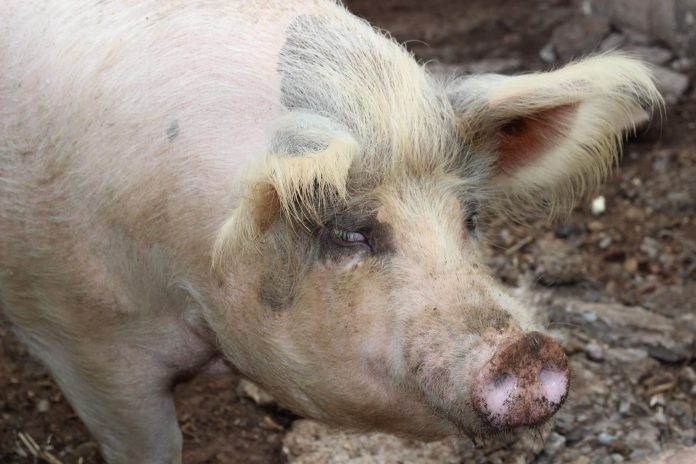Estimated reading time: 5 minutes
- Foot-and-mouth disease (FMD) is a serious, highly contagious viral disease of cattle, sheep, goats, swine and other cloven-hoofed animals, and has a major negative impact on the economy.
- The virus has seven foot-and-mouth disease strains that cause the disease, and vaccination is the best means of controlling it. There is no border that can stop it, so the risk of FMD spreading to and from neighbouring countries is high.
- Sick animals develop a fever and blister-like sores on the tongue, lips, in the mouth and between the hooves.
- Infected animals spread foot-and-mouth disease via bodily substances such as saliva, urine, manure, milk and semen. The virus can also become airborne when infected animals exhale.
- Contaminated meat, or raw or undercooked animal products, as well as milk and semen can transmit the disease.
Foot-and-mouth disease (FMD) is a serious, highly contagious viral disease of cattle, sheep, goats, swine and other cloven-hoofed animals, and has a major negative impact on the economy. It is a notifiable disease, which means that if there is an outbreak on a farm and it is not reported, the producer can be held legally liable. If there is an outbreak, the farm and adjacent area are placed under quarantine and the movement of livestock and meat is restricted.
According to an article in the monthly newsletter of the World Organisation for Animal Health (WOAH), the disease affects an estimated 77% of livestock in Africa, the Middle East, Asia and parts of South America.
Distribution of FMD
The virus has seven different strains that cause the disease, and vaccination is the best means of controlling it. There is no border that can stop it, so the risk of FMD spreading to and from neighbouring countries is high. If there was a breakout, the movement of animals to and from that farm, area or country is restricted and trading of all animals and animal products is prohibited.
According to well-known veterinarian, Dr Faffa Malan, FMD is a herd disease. If one animal is infected, the entire group is considered infected.
Buffaloes in the Kruger National Park are carriers of FMD but do not present with any symptoms. A fence, or so-called red line, was erected to prevent the disease from spreading to the commercial livestock production areas in the park’s immediate vicinity.
The fence has, however, sustained some damage since then. Moreover, the border fence between South Africa and some of its neighbouring countries in which FMD occurs does not prohibit the movement of game and livestock – this led to several outbreaks of the disease in South Africa. Elephants also regularly trample the park’s fence, which is usually repaired quite quickly.
Read more about the Animal Diseases Act’s approach to foot-and-mouth disease here.
Disease signs
Sick animals develop a fever and blister-like sores on the tongue, lips, in the mouth and between the hooves. While most animals survive FMD and recover quickly, sizable losses do occur because animals find it difficult to ingest feed and to walk, leading to weakness.
Infected animals spread FMD via bodily substances such as saliva, urine, manure, milk and semen. The virus can also become airborne when infected animals exhale.
Kraals, buildings, vehicle tyres, hay, feed and water that have been exposed to infected animals can all harbour the disease. People can spread the virus if their hands, clothes, shoes or the equipment they handle are not thoroughly disinfected after contact with infected animals.
Contaminated meat, or raw or undercooked animal products, as well as milk and semen can transmit the disease. Since the disease can become airborne, animals grazing next to the road can even contract FMD from a passing truck transporting infected animals.
Prevention and treatment
Vaccines for the different trains can boost animals’ resistance. However, there is no treatment for FMD-infected animals. The only elements that can kill the virus are heat, low humidity, acid and certain disinfectants.
Good biosecurity measures are the best way of controlling the disease. If there is an outbreak in an area, the people that come into contact with these animals and the equipment they use must be strictly controlled. Exercise some caution when introducing new animals into a herd or flock; producers must also endeavour to limit the risk of contamination.
Quarantine new animals in a separate camp for seven to 28 days, and make sure your farm’s fences keep your own animals in and foreign animals out.
Be especially vigilant when unknown vehicles are utilised for transporting animals. Trucks and equipment most undergo regular cleaning and disinfection, and the producer must know exactly where his animals’ feed comes from. Veterinarians are not excluded from biosecurity measures and, when visiting the farm, they must wear clean clothes and make sure their equipment is clean and disinfected. People who have been in contact with infected animals should not have contact with livestock for at least seven days.
A bath containing disinfectant through which vehicles can drive and a footbath for visitors to disinfect their shoes, can also contribute to limiting the risk. Visitors arriving from suspected FMD outbreak areas must not be allowed to come into contact with livestock.
Producers need to be aware of what is going on in their environment. Any movement of animals deemed suspicious must be reported. As FMD can lead to major economic damage for producers, the livestock industry and the country, an early detection and warning system is essential to curb any outbreaks. – Andries Gouws, Stockfarm
For more information, phone Dr Faffa Malan on 082 908 8666 or email dokfaffa@nashuaisp.co.za.



